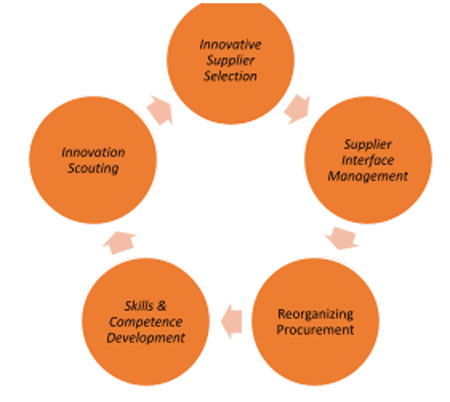As procurement organizations continue to make moves to raise their strategic value beyond a focus on finding and negotiating the best price and terms from suppliers, supporting product innovation is a key opportunities.
Supply Chain Digest Says...
|
 |
| Traditional procurement competences are insufficient for procurement to perform effectively in an innovation role. |
 |
What do you say? |
| Click here to send us your comments |
|
 |
| Click here to see reader feedback |
|
“The reason why procurement must be involved innovation is simple: most innovations these days come from suppliers,” recently wrote Thomas Johnsen, a professor of procurement and supply management at Audencia Business School in France, on the UK’s SupplyManagement.com web site.
Yet, 39% of procurement organizations are rarely involved in innovation, according to the Deloitte Global CPO survey in 2021.
Supplier innovation is of course nothing new, but Johnsen says there has been an important change in recent years.
He writes that while existing supply partners used to be the main source of innovation for companies, they are now needing to look further afield to potential suppliers from outside their existing supply networks.
“Traditional industry boundaries are becoming blurred so it is necessary to scout for innovations from existing as well as new unknown suppliers,” Johnsen notes.
What is becoming clear, Johnsen adds, is that the innovation challenge demands new ways of working in procurement.
That means that procurement’s ablity to have a greater impact on product innovation is dependent on developing process innovation within the procurement organization itself.
Towards that goal, Johnsen offers a framework for procurement involvement in innovation, as shown in the graphic below, which is followed by a brief summary of key process steps in the model:
A Framework for Procurement Involvement in Innovation

Source: Thomas Johnsen
Innovation scouting: Procurement can perform an important role in innovation scouting, building on supply market intelligence, such as by organizing supplier innovation days or workshops.
(See More Below)
|
CATEGORY SPONSOR: SOFTEON |
|
|
| |
|
|
Supplier interface management: Procurement can act as a bridging function between R&D and innovative suppliers, ensuring both a commercial and an operational focus in interactions with prospective suppliers. Where R&D can be responsible for technological interactions, procurement can act as an operational and commercial gatekeeper and foster collaborative supplier relationships.
Reorganizing procurement: Johnsen's research shows how some companies have reorganized procurement, such as by creating a new dedicated procurement unit for innovation that works alongside operational procurement. Johnsen says another solution is employ innovation purchasers to take the lead on innovation sourcing.
Skills and competence development: Traditional procurement competences are insufficient for procurement to perform effectively in an innovation role, Johnsen says. What is needed is creativity and curiosity, cross-functional teamwork critical thinking, leadership and communication, and strategic thinking.
Johnsen notes he is very involved in research in the area of procurement and innovation. We can expect more insight soon.
What do you think of the Johnsen's thoughts on procurement and innovation? Let us know your thoughts at the Feedback section below.
|